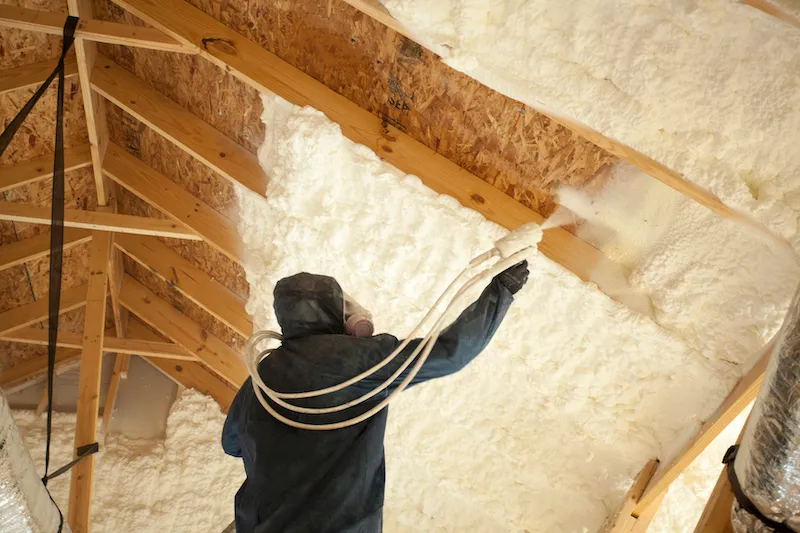
When insulating your Anderson County home or business, choosing the suitable material can significantly affect energy efficiency, comfort, and overall costs. D&D Insulation LLC has been serving the Anderson County, Texas, community since 1998, offering quality spray foam and fiberglass insulation services. If you’re wondering whether spray foam insulation is the best option for your space, this in-depth guide will explore your insulation options and help you make an informed decision.
Before we explore the benefits and considerations of spray foam insulation services, let’s break down the main types of insulation available to homeowners and businesses:
Open cell spray foam is lightweight, flexible insulation that fills cavities to create an airtight seal. Due to its expansive nature, this type of insulation is ideal for interior walls and hard-to-reach spaces. It also works well for soundproofing, helping maintain quieter living and working environments.
Closed-cell spray foam insulation is denser and more rigid than open-cell foam, making it ideal for exterior walls, crawl spaces, and areas that need added structural support. Closed-cell insulation has a higher R-value (approximately 6.5 to 7 per inch), providing more effective thermal resistance.
Fiberglass batt insulation is a cost-effective and traditional insulation method. It comes in rolls or pre-cut panels and is installed between studs, joists, or beams. Batt insulation is popular for use in attics, walls, and floors.
Fiberglass loose-fill insulation (also known as blown-in insulation) is ideal for filling irregularly shaped spaces, such as attic floors. It is installed using a blowing machine, which helps create an even insulation layer.
After applying spray foam, many homeowners paint over it for a clean, finished look. Paint can also add an extra layer of protection to the insulation. However, this is generally considered a cosmetic option rather than an insulation solution.
Spray foam roof insulation is an excellent option for commercial buildings. It adds thermal resistance to the roof, prevents air leaks, and can extend lifespan. Spray foam roofs also help protect against moisture infiltration and can significantly improve the building’s energy efficiency.
If you’re weighing your options, here are some of the standout benefits of choosing spray foam insulation over other methods:
Spray foam insulation, whether open or closed cells, excels at sealing air leaks, which reduces heat transfer. Unlike fiberglass or loose-fill, spray foam provides a higher R-value per inch, meaning it can achieve better thermal resistance in smaller spaces.
Closed-cell spray foam acts as both an air and vapor barrier, preventing drafts and moisture buildup. This is particularly important for maintaining indoor air quality and preventing mold and mildew. Traditional insulation, like fiberglass, cannot provide the same level of moisture control.
Unlike fiberglass or loose-fill, which can sag or settle over time, spray foam insulation adheres to surfaces and maintains its form. This ensures long-term efficiency without the need for reapplication.
While spray foam insulation in Anderson County offers many advantages, some might have better options. Here are some situations where you may consider alternatives:
The ideal insulation solution will depend on several factors, including:
Choosing the proper insulation is a big decision; we’re here to help. If you’re in Anderson County or the surrounding area, D&D Insulation LLC is ready to bring our decades of experience to your next project. Whether you’re building a new home, renovating an existing space, or looking to enhance your commercial building’s energy efficiency, we’ve got the expertise you need.
Please call us today at (903) 389-5705, visit our website at dndinsulation.com, or email us at [email protected] to schedule your free estimate. Let’s make your property more comfortable, efficient, and ready for whatever weather Texas throws our way.